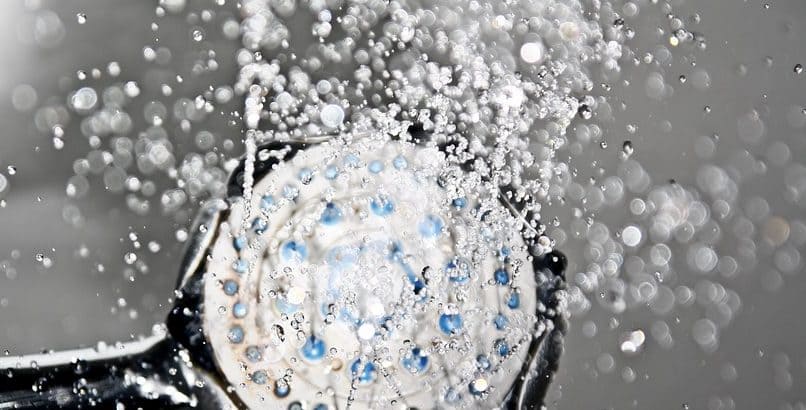
How Does a Shower Work?
So, how does a shower work? Well, it’s pretty easy! You turn on the tap, get the temperature of the water right and adjust the shower head to get the water flow pressure equally right. Then you stand under warm water for however long you need while thinking about life’s biggest problems.
We hate to say it, but there’s a little more to shower plumbing than that. Behind the scenes of your shower system, there’s a world of fixtures, fittings and drainage.
We’re not planning to provide a boring rundown of the mechanics, no. The only times we’ll mention technical terms like tub spout and diverter valve is right here, right now. That’s it. We want to give easy explanations so you can be better prepared the next time you need to call a plumber.
What Shower System Parts Are Behind The Wall?
We’re all very familiar with the parts of the shower that we see and touch every day, such as shower heads and the shower drain. Even the shower pan. But how about those parts that we don’t see, those that are concealed but keep things chugging along?
Starting with the basics, typically you’ll find these components behind a shower wall:
- Pressure balancing valve (tempering valve) or thermostatic mixing valve
- Cold water supply
- Hot water supply
- Shower head riser
Let’s start with an easy explanation. Hot water pipes and cold pipes separately funnel water into the pressure balance valve. It is here where they combine when you turn on the taps, with the water moving up the shower head riser and out of your shower head.
The valve is where everything gets a little more technical. Inside, it keeps the hot and cold water separate until you’re ready for them to mix and turn the taps.
Understand the Different Shower Valve Types
A pressure balance valve adjusts the mix of hot and cold water to maintain a steady temperature when there are changes in water pressure. So, if someone flushes a toilet or starts the dishwasher, it helps prevent the shower from suddenly going ice cold or scalding hot.
A thermostatic mixing valve, on the other hand, is a bit more sophisticated. It keeps your shower water at the temperature you’ve set, regardless of fluctuations in the water supply temperature or pressure. This means even if the cold water pressure drops or the hot water temperature varies, your shower temperature stays constant. It’s great for a consistent temperature shower, but it’s generally pricier than a pressure balance valve.
What Is A Power Shower?
If you’re seeking a shower experience that’s a step up from the usual, consider a power shower. It employs an integrated pump to enhance the water flow, transforming a low-pressure trickle into a robust stream. Unlike a regular shower, which is at the mercy of the shower water pressure in your home, power showers ensure a consistently strong spray. It’s an ideal upgrade for an invigorating shower, though it’s worth noting that this added luxury does come with increased water and energy usage.
What’s Up With My Shower Drain?
Shower drains are more than a hole in the ground. If you could see the whole drainage setup you’d find a:
- Drain trap, either an S or P-shape
- Drain pipe
- Reducer or reducing coupling
- Drain riser pipe
- Main vent stack
The drain trap is either P or S-shaped for optimum flow and hygiene. It catches all the bits of soap, hair and whatever else flows down the tub or drain. Depending on your trap, you may be able to easily remove it for cleaning.
The P and S shapes also allow for water to pool at the bottom, forming a watertight seal that prevents unwanted sewer smells from sneaking into the bathroom.
Staying on nasty odours, the main vent stack also helps keep your bathroom smelling fresh. The vent stack runs out of the piping, through the wall and eventually pops out of the roof. Allowing air to flow through means the water flows more freely and no gasses build up.
How Does The Shower Head Work?
Your shower head is where the real variety comes in. Much of it comes down to the look and functionality, but there is an increasing amount of low-flow, environmentally friendly shower heads available.
Inside the shower head, the aerator determines the maximum flow of water and pressure. It also influences the two common ways water comes out:
- Aerating: water mixes with air, creating wider coverage with a more mist-like spray
- Laminar-flow: water is separated into individual streams for a direct approach
Now, when it comes to the actual shower head, that’s up to you.
The wall-mounted fixed shower head is your traditional style. There is also the handheld shower head that provides versatility and convenience. Rainfall showers give you a tropical resort feel, while something like a filtered shower head ensures you have the cleanest water possible.
Metropolitan Your Shower Plumbing Expert
Are you after some shower drain pipe repairs, a new mixer shower head installation or any other bathroom plumbing services? Call the customer service team at Metropolitan Plumbing and we’ll have a licensed and experienced plumber on the road with our same-day service promise!
Published: 2020-07-10

















